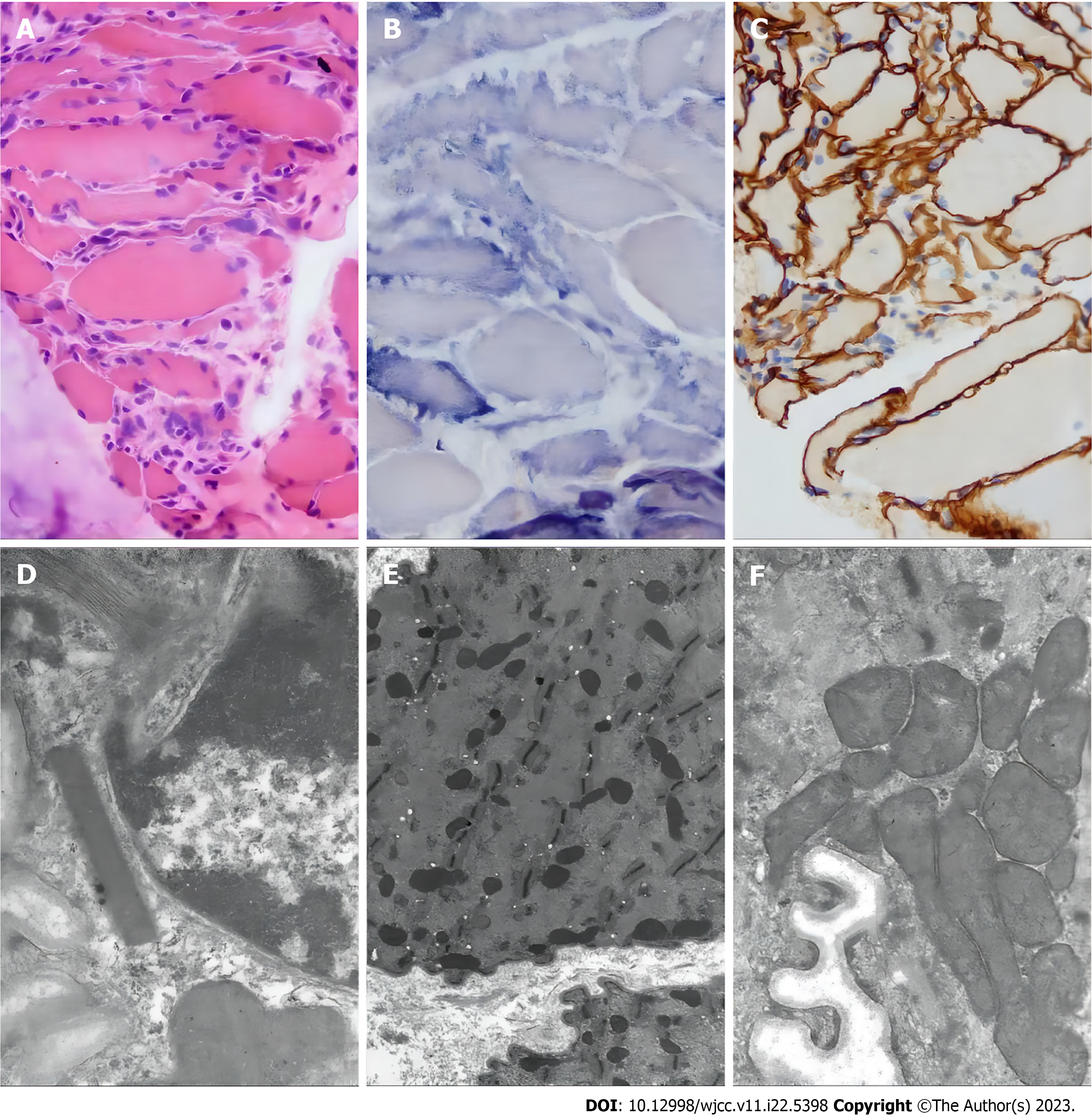Copyright
©The Author(s) 2023.
World J Clin Cases. Aug 6, 2023; 11(22): 5398-5406
Published online Aug 6, 2023. doi: 10.12998/wjcc.v11.i22.5398
Published online Aug 6, 2023. doi: 10.12998/wjcc.v11.i22.5398
Figure 2 Optical and electron microscopy of the muscle biopsy of the left calf muscle.
The possibility of mitochondrial myopathy should be considered. A: Muscle biopsy with hematoxylin-eosin staining. The size of muscle fibers varies, some muscle fibers show atrophy, a few muscle fibers’ nuclei move inward, individual nuclei gather, muscle fissure is not obvious, and muscle fibers shrink. There is no obvious degeneration and necrosis, no lipid droplets and glycogen vacuoles in the cytoplasm of muscle fibers, no broken red fibers or rimmed vacuoles, no small keratinized muscle fibers or group atrophy, and no bundles. Fibrous tissue hyperplasia of muscle fascicular membrane and myo-intima is not obvious, and inflammatory cells are not obvious; B: Muscle biopsy with succinate dehydrogenase (SDH) staining. Muscle biopsy showed no ragged-blue fiber and strongly SDH reactive blood vessel; C: Muscle biopsy with dystrophin staining. Dystrophin expression was detected at the myosepta uniformly and continuously; D-F: Electron microscopy of muscle biopsy. Mitochondria under the sarcolemma and between myofibrils increase and accumulate, part of their volume increases, and individual mitochondria have suspected formation of lattice-like inclusion bodies.
- Citation: Chen L, Shuai TK, Gao YW, Li M, Fang PZ, Christian W, Liu LP. Treatment of a patient with severe lactic acidosis and multiple organ failure due to mitochondrial myopathy: A case report. World J Clin Cases 2023; 11(22): 5398-5406
- URL: https://www.wjgnet.com/2307-8960/full/v11/i22/5398.htm
- DOI: https://dx.doi.org/10.12998/wjcc.v11.i22.5398









